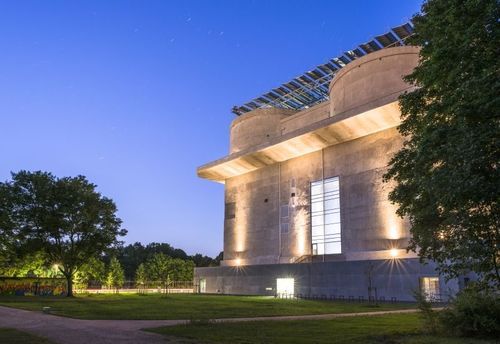
The surrounding neighborhood’s household energy is generated by an efficient combination of energy sources: besides solar energy and biogas, the bunker also uses wood chips and waste heat from a nearby industrial plant, supplying heating energy to local households. The project’s most innovative feature is its large-scale buffer storage facility with its 2 million litre capacity that integrates different eco-friendly heat and power units. The Energy Bunker also feeds the renewable power generated by its solar panels into Hamburg’s electricity grid, thereby supplying 3,000 households with heat and 1,000 households with electricity. Erected in 1943 as an air raid bunker, the original building protected thousands of people from Allied air raids. Four years later, the British Army destroyed the bunker’s interior by means of a controlled detonation. All that was left was the outer shell with its almost three meter thick walls. For almost 60 years, the building served as a war memorial and any further utilization of the premises was restricted to a few adjacent areas.
The Energy Bunker is an integral part of the “Renewable Wilhelmsburg” climate protection scheme for Europe’s largest river island with almost 50,000 residents. By the year 2050, Wilhelmsburg will be transformed into a climate-neutral district. The basis for this is provided within the framework of the International Building Exhibition (IBA), currently taking place in Hamburg. With its dedicated energy projects, the IBA is setting the groundwork for meeting Wilhelmsburg’s total energy and heating requirements in a climate-neutral way by 2025 and 2050, respectively.

